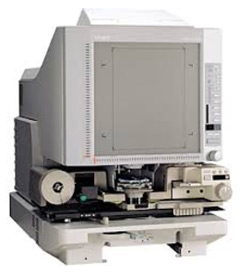
In a press release dated June 26, 2017, FamilySearch announced that microfilm distribution to branch libraries is ending as of August 31, 2017. While we all expected this would happen at some point, we didn’t expect it would happen now. Digitization of the films held in the Granite Mountain vault in Utah is still ongoing and is expected to continue until expected completion by the end of 2020. According to my calculations, it looks like that for over three years we can’t expect all films to be available that were accessible in the past. Meaning that if you wish to see microfilm that your local Family History Center hasn’t opted to keep for a while, and the data isn’t available online someplace, you’d best plan on a trip to Salt Lake City. Films in the library will stay in place – at least until digitization of that roll is complete.
This has a lot of folks upset. And for good reason. How many people paid extra to have films kept at their local FHC on indefinite loan? I’m sure that number is in the thousands. It seems that indefinite is exactly that. However, since the church has given permission for local priesthood leaders to make local decisions regarding keeping microfilms already in stock, it is already being reported by some Family History Center directors that films on indefinite loan will stay. I wouldn’t expect that to always be the case, however.
As microfilm is being phased out industry-wide, costs of maintaining the viewing and printing machinery have risen. I’m guessing that the possession of low-maintenance microfilm readers by the FHCs will play into whether they try to keep film on hand for a while. Maintenance costs are a big part in the decision to stop film distribution I understand.
A major reason for ceasing the production and distribution of microfilm to the FHCs is that the cost of the film itself has gone out-of-site. I’ve seen it said that the price is as high as $85 per roll. Whether that’s silver or diazo film I don’t know. Diazo film was always cheaper. I don’t know if FamilySearch produced silver or diazo film. Maybe a reader could answer that question in “Comments.”
Now – all this being said – In the long run, we are all thrilled to have access from home to what we once had to view at the local FHC. So we may need patience, but in the end, it looks to be a good thing.
Following is the “updated” press release. Also see the FAQs by clicking here.
June 26,2017 – FamilySearch, a world genealogy leader and nonprofit, announced today its plans to discontinue its 80-year-old microfilm distribution service. The transition is the result of significant progress made in FamilySearch’s microfilm digitization efforts and the obsolescence of microfilm technology. The last day for ordering microfilm will be August 31, 2017. Online access to digital images of the world’s historic records allows FamilySearch to service more people around the globe, faster and more efficiently. See Finding Digital Images of Records on FamilySearch.org and Frequently Asked Questions.
A global leader in historic records preservation and access, FamilySearch and its predecessors began using microfilm in 1938, amassing billions of the world’s genealogical records in its collections from over 200 countries. Why the shift from microfilm to digital? Diane Loosle, Director of the Patron Services Division said, “Preserving historic records is only one half of the equation. Making them easily accessible to family historians and researchers worldwide when they need them is the other crucial component.”
Loosle noted that FamilySearch will continue to preserve the master copies of its original microfilms in its Granite Mountain Records Vault as added backup to the digital copies online.
As the Internet has become more accessible to people worldwide over the past two decades, FamilySearch made the decision to convert its preservation and access strategy to digital. No small task for an organization with 2.4 million rolls of microfilm in inventory and a distribution network of over 5,000 family history centers and affiliate libraries worldwide.
It began the transition to digital preservation years ago. It not only focused on converting its massive microfilm collection, but also in replacing its microfilm cameras in the field. All microfilm cameras have been replaced with over 300 specialized digital cameras that significantly decrease the time required to make historic records images accessible online.
FamilySearch has now digitally reproduced the bulk of its microfilm collection—over 1.5 billion images so far—including the most requested collections based on microfilm loan records worldwide. The remaining microfilms should be digitized by the end of 2020, and all new records from its ongoing global efforts are already using digital camera equipment.
Digital image collections can be accessed today in three places at FamilySearch.org. Using the Search feature, you can find them in Records (check out the Browse all published collections link), Books, and the Catalog. For additional help, see Finding Digital Images of Records on FamilySearch.org.
Transitioning from microfilm to digital creates a fun opportunity for FamilySearch’s family history center network. Centers will focus on simplified, one-on-one experiences for patrons, and continue to provide access to relevant technology, popular premium subscription services, and restricted digital record collections not available to patrons from home.
Centers and affiliate libraries will coordinate with local leaders and administrators to manage their current microfilm collections on loan from FamilySearch, and determine when to return films that are already published online. For more information, see Digital Records Access Replacing Microfilm.